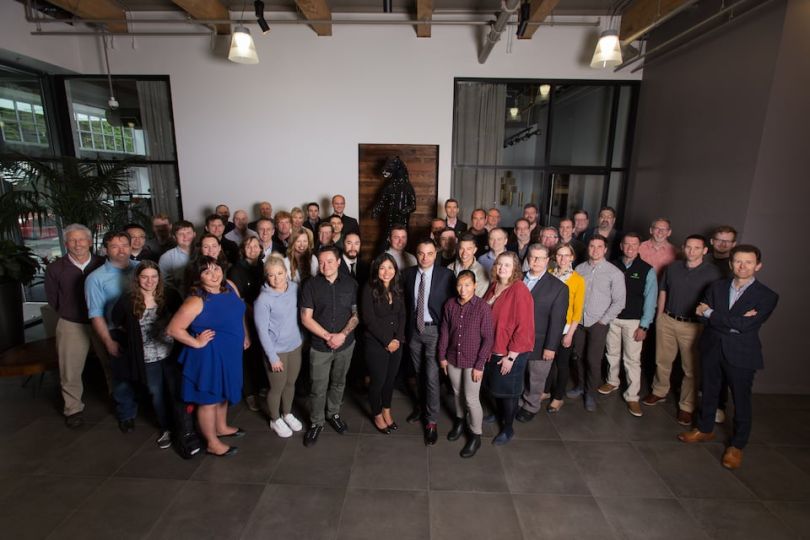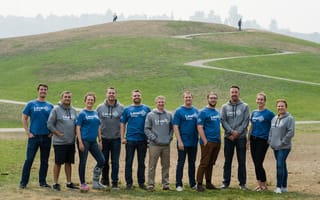For the second summer in a row, Puget Sound was swathed in a choking cloud of smoke, an omnipresent haze pumped into the atmosphere by fires that continue to burn throughout the Pacific Northwest. That smoke has mostly disappeared by now — along with the subdued sense of unease that pervaded the city during its visit — but experts are warning us to get used to it as an annual event.
As the changing climate manifests itself in more and more extreme weather events, tech entrepreneurs are leveraging new digital tools to cut out the barriers between renewable energy sources and consumers. The power grid is around a century old, and a combination of inertia-bound energy companies, complex regulation and margin-raising middlemen have created an industry that is cumbersome and ill-equipped to cut emissions.
In other words: it’s well overdue for disruption.
We spoke to three Seattle energy tech companies to learn a little about how they’re helping to lower the industry’s carbon footprint — and the challenges they face.

Drift uses complex software to bypass electricity around the ranks of credit brokers, billing companies, energy brokers, banks, scheduling companies and others who have wedged themselves between energy producers and consumers. The company allows users to choose plans that focus on cutting costs or sourcing renewable energy, and co-founder and CEO Greg Robinson said this allows Drift to offer consistently lower prices to its consumers.
There are a lot of regulatory requirements in becoming a federal utility.”
Tell us how you got started in the power business.
Drift was founded by myself and my former bandmate, Ed. We became energy tech entrepreneurs who saw how inefficient, complex and unfair things were for customers while building solar panels. We set out to create a platform that helps cut through the fog — empowering both energy buyers and sellers. Drift is that platform.
Which particular element of the power grid are you trying to modernize, and how?
Our company cuts out traditional middlemen in the system, who aggregate energy assets and write contracts with utilities. Instead, we work directly with electricity producers. The company can work with smaller producers than a typical utility, including aggregated rooftop solar systems.
What challenges have you faced along the way?
There are a lot of regulatory requirements in becoming a federal utility.

When a commercial or industrial business wants to use renewable energy, they must often cut large contracts with a single provider or simply build the resource themselves — and both options are impractical for small and medium-sized businesses. LevelTen Energy provides an online marketplace for smaller companies to buy renewable energy from a range of producers, thereby widening the potential market for clean power. Founder and CEO Bryce Smith once told Built In Seattle he originally got into the renewable energy business because he knew it would become an essential part of our infrastructure, and “if it didn’t, we’d all be screwed anyway.”
Tell us how you got started in the power business.
I started a craft beer and wine importing and wholesaling company shortly after college. That wasn’t a great business in the mid-1990s, but I got the startup bug. I knew I wanted to launch another company someday, so I searched long and hard for the right industry. I figured that renewable power was destined to become a major industry at some point, so I worked hard to come up the learning curve. I cut my teeth at the Bonneville Environmental Foundation, where the first Renewable Energy Certificate transactions were completed. I then went on to co-found OneEnergy Renewables, a national developer of utility-scale solar projects. Finally, in 2016, I founded LevelTen Energy to make the renewable procurement process simpler and less risky for corporate and other non-utility power buyers.
As an entrepreneur, if most people don’t think you’re idea is impractical or absurd, you’re probably not being ambitious enough.”
Which particular element of the power grid are you trying to modernize, and how?
Our aim is to decarbonize the electrical grid. The most effective way to do that is to pay carbon-free sources of electricity to dump their power into the grid. That means mobilizing as much demand as possible for wind and solar power. The LevelTen Marketplace allows corporations to procure renewable energy more easily — and in significant volumes — so we’re letting customers put their money where their values are. They’re literally changing the composition of the grid in the process.
Until recently, only the world’s largest tech companies could successfully complete these renewable energy transactions. We’re proud that our technologies enable more buyers to participate in the market, greening the grid more rapidly.
What challenges have you faced along the way?
I've faced most of the typical startup challenges over the years: running frighteningly low on cash, struggling to manage personalities within the team, trying to juggle priorities with too few hours in the day, and so on. However, since this is my third company at least I knew what was coming my way. One challenge that sticks out is the necessity of maintaining focus on the company’s vision in the face of a chorus of skeptics. Inevitably, many people will view you and your company as crazy. I’ve finally learned to wear that like a badge of honor. As an entrepreneur, if most people don’t think you’re idea is impractical or absurd, you’re probably not being ambitious enough.

Optimum Energy leverages machine learning, cloud, IoT and other technologies to help commercial and industrial buildings reduce the water and power consumed in their HVAC systems. The business was co-founded in 2005 by Nathan Rothman, who had presided over a company that built manufacturing plants in Asia, and Jim Hanna, a veteran of the enterprise software industry. The technology was initially marketed as a cost-cutting exercise for large businesses, but has taken off in recent years as businesses consider their environmental sustainability. Senior Director of Product Innovation Ian Dempster said Optimum Energy now works with over 200 installations around the world in industries of all stripes.
Convincing people of the value of software in the cloud was difficult 10 years ago — today, it’s a much easier conversation.”
How is Optimum Energy helping businesses to reduce their power consumption?
We optimize HVAC systems, the largest consumer of energy in buildings. Optimization means automatically controlling HVAC equipment as a holistic system, 24/7, to use the least amount of energy without sacrificing building performance.
Optimum Energy’s technology has enabled current customers to save over 957 million kilowatt-hours of electricity, reduce carbon emissions by nearly 608,000 metric tons and save over 200 million gallons of water.
Our holistic approach — optimizing systems, not just individual components, to achieve maximum performance — makes our technology an integral part of intelligent buildings and the industrial Internet of Things.
What challenges have you faced along the way?
The first issue is that the customer doesn’t necessarily believe that significant energy savings are possible, but once they see the results of the first project, they sign up to optimize the rest of their building portfolio.
There is also resistance from engineers who are unfamiliar with a holistic way of operating a building. We find that when we train people and they understand how the software works, they see the value and are totally on board.
Lastly, the project was designed to make use of the cloud connection before that was common. Convincing people of the value of software in the cloud was difficult 10 years ago — today, it’s a much easier conversation.





